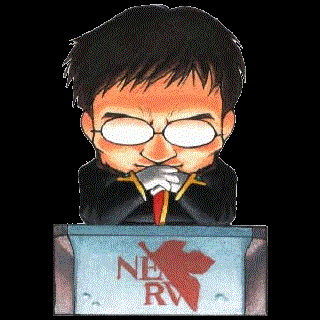Me, a nerd: its just a joke don’t go off on a tangent, dont go off on a tangent, dont go - just let it be… I just… I just…

I NEEEED IT
So achtbually, nature works with transcendental real numbers on the complex plane with uncountably infinite precision.
Lets break this math nerd statement down in a way normal people might understand. First, most numbers are multi-dimensional and live on a plane instead of a line. The straight integer number line like 0, 1, 2 is just a small slice of the plane. In this plane, imaginary numbers occupy their own dimension. Complex numbers which are made of both real and imaginary parts occupy another dimension.
Moreover, most numbers are also infinitely precise thus being uncalculatable. Their decimal places go on forever and ever without repeating or being representable with a ratio of integers. Its why we only have good approximations for pi instead of an exact pinpoint knowledge of it. There are methods to get closer and closer approximations but you need an infinite time frame to complete that unending process.
Theres actually somehow more uncountably real numbers than countable integers and ratios, even though they are both infinite. There are more decimal numbers between 0-1 than there are integers between 0-infinity. One form of infinity is literally bigger than another, and that bigger infinity is the one nature likes working with.
Moreover, most of our universal physical and mathematical constants are transcendental reals because nature gets a hard-on for baking multidimensional fractal holomorphic topology and complex nonlinear equations into its magical abstraction bullshit logic.
Theoretical physicist during the 20th century were VERY salty about finding complex and imaginary real numbers in their physical equations. Since it implies that complex numbers arent just imaginary tools of abstrction but somehow “real” and affects the universes physical machinery. Nonlinear dynamic equations put a bullet through the brains of classical scientific determinism. Thank you very much, chaos theory and entropy.
It’s not that we invented imaginary numbers, its that they were the missing piece to fully complete our understanding of algebra. With them, we finally graduated from cave man linear algebra, to discovering holomorphic dynamics which model the way natural systems actually work. After 2000 years of banging basic logical abstractions together to make a enough decent sparks of discovery for a real smoldering fire.
Computer processing power sure helped to visualize these higher dimensional topologies for our little monkey brains to process with our eyeballs in real time instead of just thinking about this stuff in the minds eye. I sure cant visualize a 4D hypercube let alone a 20ishD hyperstructure that AI image network picture forms brought down to three dimensions.
Really its a miracle that we have even a thin narrow portion of numbers we can compute, all our regular integers and ratios are islands distanced apart by an infinitely deep ocean.
In case you were wondering about the stuff in the image: Multidimensional AI activation map showing how and image AI organizes its knowledge on a neural network. Similar concepts or images are closer together.
3D mandelbrot set with the logistic map highlighted along its real number line axis. https://github.com/jonnyhyman/Chaos
minibrot zoom in
algae colony arranging itself into conjoined 2nd iteration sierpinski triangle, screenshot from a journey to the microcosmos video.
pascals algebraic triangle encoding the sierpinski triangle by if the number is even or odd (base/mod 2)
the dynamic map of where a pendulum will land if pulled upon by three magnets equally spaced given its initial starting spot. https://youtu.be/C5Jkgvw-Z6E
Yes, this reply, I was gonna make a joke along the lines that I’m sure to someone saying shit like this (that we invented numbers, imaginary or not) is like the meme forcing Italians to look at pineapple pizza being made …
… but I would lie if this post didn’t disturb me a bit to - and the “Talk nerdy to me” part just makes it worse. Nerd stuff has to have a certain level of precision, nerd kinks are exact.
Well actually it’s the other way around. The reason imaginary numbers were invented was to solve a problem we’d been crying over for centuries.
Then, as in most cases, solving one problem opens the door to millions of other problems like why in the fuck does the universe use these imaginary numbers we made up to solve cube roots?
Why is i a core part of the unit circle with like ei*pi ? “Oh that’s because i is just perpendicular to the real number line” ?! Say that sentence again, how the fuck did we go from throwing sharp sticks to utterly deranged sentences like that? More importantly why do utterly deranged sentences like that accurately describe our universe and what is the next ludicrous math concept we’re going to discover is integral to the function of the universe?
how the fuck did we go from throwing sharp sticks to utterly deranged sentences like that? More importantly why do utterly deranged sentences like that accurately describe our universe and what is the next ludicrous math concept we’re going to discover is integral to the function of the universe?
You need 3Blue1Brown in your life.
Funny how imaginary numbers were invented to solve cube roots, but the most common give example (& definition) uses square root.
Imaginary numbers are as real as negative numbers.
Are they as real as real numbers though?
I imagine
Damn, this is more complex than I thought.
Unless you’re referring to the set of Real Numbers, in which case they’re not real.
Why stop there? They’re just as real as any number.
Exactly!
But why stop there? They’re just as unreal as any number.Some might say they are even about the same amount of number as any number.
But imaginary numbers were created to solve problems!
And are a very elegant solution at that.
Ah but that’s man’s greatest folly.
By answering one question we create a hundred more.
Imaginary numbers are the proof that even in mathematics you can discover stuff even though you don’t understand what you have found. Complex numbers encode rotation.
Yup. When you have a circuit that is not purely resistive the inductive or capacitive load causes the voltage and current to not be in phase. It looks like ohms law is being violated. However the missing part of the energy is in the imaginary component to be returned latter.
But that is hardly a ‘natural occurence’ of complex numbers - it just turned out that they were useful to represent the special case of harmonic solutions because of their relationship with trig functions.
No. It’s more what the previous poster said about encoding rotation. It’s just not a xyz axes. It’s current, charge, flux as axes. The trig is how you collapse the 3d system into a 2d or 1d projection. You lose some information but it’s more useful from a spefic reference.
Without complex numbers you can’t properly represent the information.
The natural representation would be the transient solution u(t) or i(t). Harmonic solutions are merely a special case, for which it turned out complex numbers were useful (because of the way they can represent rotation). They certainly serve a purpose there, but imo this is not an instance of ‘complex numbers appearing in nature’.
Ever since I went down a particularly nasty rabbit hole and came out with a tenuous grasp on quaternions, imaginary numbers started feeling very simple, familiar and logical.
Yeah. The thing that made me “get” quaternions was thinking about clocks. The hands move around in a 2d plane. You can represent the tips position with just x,y. However the axis that they rotate around is the z axis.
To do a n dimensional rotation you need a n+1 dimensional axis. So to do a 3D rotation you need a 4D axis. This is bassicly a quat.
You can use trig to get there in parts but it requires you to be careful to keep your planes distinct. If your planes get parallel you get gimbal lock. This never happens when working with quats.
I still maintain that quats are the closest you can get to an actual lovecraftian horror in real life. I mean, they were carved into a stone bridge by a crazy mathematician in a fit of madness. How more lovecraftian can you get?
Imaginary is a poor name for them because it implies they dont exist. Complex numbers[/component] is more appropriate
Complex numbers ≠ Imaginary numbers
Imaginary numbers are any number multiplied by the square root of negative 1, a complex number has both a real and imaginary part. 10+i is complex, 10*i is imaginary.
Yep. So my point still stands. Imaginary numbers are a part of complex numbers
the name seems to be an unfortunate choice that stems from their historical usage as “a means to an end”. i.e, they were first used as part of a method to find some solutions to cubic equations. this method would require algebraic manipulations of complex numbers, but the ultimate goal was to discover a real root. the complex roots would be discarded once a real root was found (if it existed).
the wikipedia article attributes the name to Descartes:
… sometimes only imaginary, that is one can imagine as many as I said in each equation, but sometimes there exists no quantity that matches that which we imagine.
which i think helps to highlight how skeptical the people at that time were about the existence of the “imaginary” numbers.
source: memories of my first complex analysis class, and https://en.wikipedia.org/wiki/Complex_number#History
i’d strongly recommend reading the history section of that wikipedia page to anyone interested in the topic, it has some pretty fun history
The Italian Bombelli in 1572 seemed to toy with both concepts but called imaginary numbers “quantità silvestri” (silvestri meaning ‘wild’) and complex numbers “numeri complessi”. Interesting the imaginary is a quantity and the complex is a number, but maybe old Italian didn’t have that distinction.
I suppose Descartes would agree with you, he first coined the term “imaginary” because he didn’t think they’d serve much purpose. Euler made use of them and continued using the term. Complex number is a complex - a number with a real and an imaginary component.
A wild number appeared!
Well it’s true, they don’t exist
There are concepts in nature they describe as well as real numbers describe other concepts. They definitely exist.
Imaginary numbers: proof that mathematicians don’t understand branding.
Hate to break it to you, but all numbers are imaginary.
I’m not sure I agree with this… it’s like if no one is around to hear a tree fall, does it make a sound?
All numbers are imaginary
They are a logistical concept, invented with the purpose of counting and calculating quantities.
Strictly speaking “Math” doesn’t exist in nature.
Circles are not round because of Pi. A triangle’s sides are not consistent because of the Pythagorean theorem. A thrown ball doesn’t travel in a parabola because of Algebra.
Math is a tool CREATED to understand natural phenomena. Though its logistical power is so strong that it can be stretched to understand almost everything that can be measured.
If a tree falls in the woods it vibrates the air at an audible frequence. Your ears absorb the vibrations and send a signal to your brain that we understand as sound. But the tree never makes a sound. The tree exists and interacts with the environment. Your brain interprets some of those interactions as sound.
You can think of the numbers as the sound. You can understand them clearly, but they’re just an interpretation of a natural phenomena.
But the tree never makes a sound.
That depends on how you define ‘sound’. If it’s only perception and interpretation that creates sound, then sure, a tree falling with nothing to hear or perceive it makes no sound. But if you label sound as the vibration created independent of the perception of the phenomena, then sound happens regardless of whether it’s perceived or not. Since we label some sounds as imperceptible, or outside of human hearing ranges, my interpretation would be that the phenomena is the sound, rather than the perception of it.
Yeah a good friend of mine has a PHD in math. I asked him how he would describe math. His answer was a set of rules for dealing with numbers. What’s important is how useful the rules are.
Strictly speaking humanity is a part of nature.
I always thought the tree falling in the forest thing was an inpenetrable koan from the depth of ancient philosophy, but it’s actually a pretty simple tool to highlight the difference between sound as a physical thing and sound as perception, two related but different concepts for which we only use one word, hence the confusion.
It is, certainly. I was coming at it from the perspective of if there weren’t humans to count, we would still have 10 fingers. I.e., if there’s no one around to count, do numbers still exist.
https://m.youtube.com/watch?v=ymGt7I4Yn3k
Its a bit long but I think its the best explanation of the Russel paradox. Essentially, numbers really aren’t what we think they are.
Just thought it might be interesting to someone at least.
And THEN the imaginary numbers started EATING ALL THE CATS AND DOGS
Fine, then you figure out what the square root of a negative number actually is!
My calculator says they are an “error”.
https://www.wolframalpha.com/input?i=sqrt(-25)
No idea why it doesn’t just say
5ilol.Calculators also say that dividing by 0 is an error, but logic says that the answer is infinite. (If i recall, it’s more correctly ‘undefined’, but I’m years out of math classes now.)
That is, as you divide a number by a smaller and smaller number, the product increases. 1/.1=10, 1/.01=100, 1/.001=1000, etc. As the denominator approaches 0, the product approaches infinity. But you can’t quantify infinity per se, which results in an undefined error.
If someone that’s a mathematician wants to explain this correctly, I’m all ears.
It approaches positive and negative infinity, depending on the sign of the denominator. The result must not be two different numbers at once, so dividing by zero cannot be defined.
There are other reasons, too, but I forgot about them.
Serious question because I am math-challenged.
What things are we able to quantify by finding the square root of a negative number aside from square roots of negative numbers?
Electrical engineers use them for calculating AC-circuits. In a DC circuit, you only have to worry about how much volt and amperes are in each part of the circuit. In an AC circuit, you also have to worry about the phase, cause the voltage goes up and down. The phase means where in that up and down you are.
The complex number is interpreted as a point on a 2-dimensional plane; the complex plane. You have the “normal” number as 1 axis, and orthogonal to that the imaginary axis. The angle of the vector to that point gives the phase.
They can be generally used for such “wavy” (ie periodical) processes. But I think this particular field of electrical engineering is the main application.
Interesting, thank you!
I’m glad to hear you say that, cause after sending I worried that I didn’t make much sense.
Equations. When we model things with equations, sometimes they don’t have a ‘solution’ at a particular place, unless we use the formal math rules of ‘imaginary’ numbers like i. Someone else in the comments mentioned electric conductance/resistance in circuits as an example.
OP, you need to watch this video. https://youtu.be/cUzklzVXJwo
Spoiler
Imaginary numbers exist in nature.
https://lemmy.blahaj.zone/post/15648655
I wrote a piece about why imaginary numbers are actually important. It’s in german though.
To sum it up, to every polynomial equation, there exists at least one solution to it, if you allow complex numbers to be solutions.
I used that text as a little test for the AIs at DDG. Here’s from Claude 3 Haiku.
Here is the translation to English:
Complex Numbers and Polynomials
Something that hardly anyone knows is that complex numbers, in addition to their application in Complex AC Calculations (known to HTL students), also have a second, important use.
In mathematics, there is often the problem of finding a number x for a given function f(x) such that f(x) = 0 holds.
This is often the case for polynomials, as many important mathematical functions can be well approximated by polynomials.
The Fundamental Theorem of Algebra states that if we allow x to be a complex number, then there is always a solution to the problem such that f(x) = 0.
Restriction: but the polynomial must not consist of only a constant term, i.e., f(x) = 5 would be inadmissible. The x must appear at least once in the polynomial. Otherwise, there are really no restrictions :-)
PS: In the example given in the image (f(x) = x^2 + 2 = 0), a solution would be approximately x = √2 i ≈ 1.4 i.
Then I asked: “Please make it understandable to a general audience and phrase it like a pop-science author would.”
Here is the translation in a more accessible, pop-science style:
The Hidden Power of Complex Numbers
Most people think complex numbers are just some obscure math concept, useful only for electrical engineers. But these mysterious numbers actually have a hidden superpower - they can solve all sorts of important math problems.
You see, in math, we often want to find a number x that makes a function f(x) equal to zero. This comes up a lot when working with polynomials - those nice, smooth equations made up of powers of x.
The problem is, sometimes there just doesn’t seem to be any real number x that does the trick. That’s where complex numbers swoop in to save the day!
The Fundamental Theorem of Algebra proves that as long as we allow x to be a complex number (a number with both a real and imaginary part), then there will always be a solution that makes f(x) equal to zero. No exceptions!
So complex numbers unlock the ability to solve all kinds of polynomial equations that would be impossible with just regular old real numbers. It’s like they have a secret mathematical superpower.
Of course, there is one small catch - the polynomial can’t be a simple constant, like f(x) = 5. It has to actually contain the variable x somewhere. But other than that, complex numbers can tackle any polynomial problem you throw at them.
So the next time you see an imaginary number like √(-1), remember - it’s not just some weird math trick. It’s a powerful tool for solving important equations. Complex numbers may seem strange, but they’re secretly the heroes of the math world!
oh wow, the second one is actually impressive. :)
Math: Imaginary numbers!
Me: Fuck that, imaginary dragons.
For real man, Imagine Dragons
Muppet fighting ring, funniest shit ever.
Is that number with us in this room right now?
Yup. Quantum mechanics relies on complex numbers.
¬
Thank you evoker!
but our iR is in another ethereal plane!
deleted by creator













